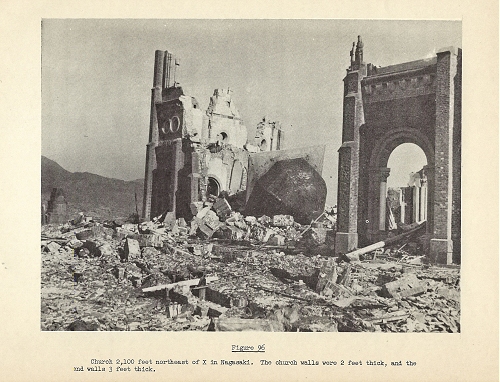

When he had penetrated the bushes, he saw there were about twenty men, they were all in exactly the same nightmarish state: their faces were wholly burned, their eye sockets were hollow, the fluid from their melted eyes had run down their cheeks.

Thinking there was just one soldier, he approached with the water. On his way back with the water, got lost on a detour around a fallen tree, and as he looked for his way through the woods, he heard a voice ask from the underbrush, ‘Have you anything to drink?’ He saw a uniform.

There is one haunting passage that not only illustrates the horror of the pain and suffering, but also offers a powerful metaphor for the blindness that overtook both the victims and the perpetrators. Removing the bomb from abstract arguments endorsing matters of technique, efficiency, and national honor, Hersey first published in The New Yorker and later in a widely read book an exhausting and terrifying description of the bombs effects on the people of Hiroshima, portraying in detail the horror of the suffering caused by the bomb. Within a short time after the dropping of the atom bombs on Hiroshima and Nagasaki, John Hersey wrote a devastating description of the misery and suffering caused by the bomb. Maybe such horror can only be possible in the language of journalism. The visceral effect of violence brings to the surface what can only be considered intolerable, unthinkable, and never unknowable. Violence rendered in military abstractions and patriotic platitudes is itself an act of violence. In the immediate aftermath, the incineration of mostly innocent civilians was buried in official government pronouncements about the victory of the bombings of both Hiroshima and Nagasaki. Many died not only because of lack of medical help, but also from radioactive rain. The Japanese government stated that the death toll was much higher than the American estimates, indicating that it was close to a half million. A few days later on August 9th, another atomic bomb was dropped on Nagasaki killing an estimated 70,000 people. On Monday August 6, 1945, the United States unleashed an atomic bomb on Hiroshima killing 140,000 people instantly. National Archives and Records Administration). Air Force map of Hiroshima, pre-bombing, circles drawn at 1,000 foot intervals radiating out from ground zero, the site directly under the explosion.


 0 kommentar(er)
0 kommentar(er)
